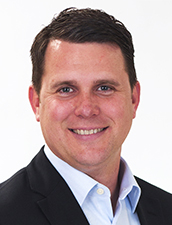2018 Power Broker
Health Care
Bankable
A South Florida nonprofit had been with the same broker and an insurance pool for decades when Giselle Lugones suggested it would benefit from a stand-alone insurance arrangement.
With 20 health care facilities — including long-term housing for the elderly, hospices, acute rehab — each with different risks, “we had lots of insurance issues,” said its CFO.
Lugones found a purchasing coalition that saved $1.5 to $2 million “on the low end.” She streamlined policies, which had been “all over the place.” She tied each facility’s policies into the primary policy and facilitated renewals, filing claims and reimbursements.
“You hire a consultant to bring you ideas and thoughts,” the CFO said, “not just sell insurance. Whatever she tells you, you can take it to the bank.”
Another client, Baptist Health System, wanted “the best of the best” health care, handled ethically, said Julia Hyett, director of risk management and insurance, BHS.
Lugones performed a thorough audit, isolating the very different risks for its physicians and hospital programs. She marketed the physicians’ programs and obtained a new partner, saving six figures. She diversified the program with global reinsurers.
And she identified holes in the program specific to regulatory and cyber coverage. Her foresight and strategic thinking informed the process, Hyett said. “She made a proactive assessment, and she put the right tools and resources in place in case we ever do have a bad situation.”
Knows His Stuff
A publicly traded pharma company had an “interesting” technology it wanted to spin into a separate company. If a spinout is friendly, it’s easy to insure, said its CEO, but if not, disputes over risk and intellectual property issues can erupt in lawsuits between stakeholders.
The CEO’s first call was to Alex Michon. The spinout got hostile and Michon, mining his deep knowledge of health care and pharmaceuticals, “navigated the treacherous waters” of potential lawsuits, the CEO said.
The spinout succeeded without lawsuits, went public and sold itself, and the company got its technology back. “We came out looking like a bright, shiny penny,” said the CEO.
The California Medical Association, a physicians’ advocacy non-profit, recently undertook a new business venture to help small group and solo practitioners remain independent while transitioning to value-based care.
CFO Lance Lewis knew the organization would have a new set of risk exposures and insurance needs. Michon gave Lewis confidence: “He asked the right questions and put together the right coverage forms,” he said. “Alex didn’t miss a beat.”
Change.org recently went through changes including a brand-new board of directors whose members were concerned about the tail on their D&O policy, said Alexis Stowers, corporate paralegal, Change.org.
Michon, Stowers said, had the tenacity and patience to explain the coverage repeatedly, because the board was unable to meet at the same time.
“They wanted to hear directly from the broker that they were covered even after their terms ended,” she said. “He spent the extra time to put them at ease.”
Packaging Innovation
In addition to consolidating its physicians’ groups, streamlining processes, obtaining good discounts and convincing carriers to bring additional physicians groups under its policy, Lee Newmark also averted a significant lawsuit against Radiology Subspecialists of Northern Illinois, said Dr. Joseph Persak, the organization’s co-president.
The prospective plaintiff wanted compensation, not a lawsuit, Persak said, and his organization wanted urgently to avoid a lawsuit.
Lee’s unexpected solution: Approach the carrier to settle out of court before the lawsuit was filed. This move “made everybody happy,” Persak said. “It was super out-of-the-box thinking.”
Facing renewals for its medical malpractice insurance, Ramapo Radiology, a radiology practice collective, had a question: If carriers viewed members as a single entity rather than individual practices, would that reduce premiums, saving money and fueling growth?
“We thought it was a good idea, but we didn’t know if carriers would agree,” said Lee Turner, chief operating officer, Ramapo Radiology. It was a heavy lift, but because of the way Newmark sold it, several carriers bid on the collaborative group.
Next on Newmark’s agenda for Ramapo, pitching “a risk retention situation with different forms of insurance,” Turner said. “We’ll all have skin in the game.” With risk spread, premiums will fall.
The idea originated with the collective, but “Lee made it his own and sold it to carriers. He knows how to package innovation to his industry.”
Working It Out
Where most people ask “why do something,” Randall Nukk asks “why not?” said W. Stephen Minore, MD, president/CEO of an Illinois anesthesiologist group, paraphrasing Einstein.
A fierce advocate for his clients and prone to challenging the status quo, Nukk arranged the abandonment of the waiting period before new practitioners are covered. Now they’re insured the moment their contract is signed — which is an important recruiting tool, since Illinois is the “risk capital of the world for malpractice.”
“Whenever he’s presented with a hard stop, he figures out a workaround,” Minore said.
Kenneth Tuman, MD, president and chairman, University Anesthesiologists, got a taste of the Nukk problem-solving chops when he asked what the group could do for its 43 physicians and three certified registered nurse anesthetists.
Taking advantage of the group’s “great track record” and low loss ratios, Nukk proposed a profit-sharing plan to carriers in which they returned a percentage of premiums paid if claims fell below a specified threshold.
That worked well, and at renewal, Tuman asked the same question again: What more can we do for the group? Nukk negotiated — and got — a tiered system where the group got back a larger percentage of premiums when claims were lower. He negotiated a higher profit sharing rate at the same time.
“He innovated a great program, then tweaked it to make it even better,” Tuman said. “This is original.”
The Spark
The Cleveland Clinic is a large health care system in hurricane-prone South Florida. Because of its deductible structure, it held a $19 million windstorm exposure in one hospital.
It was adding buildings, and the carrier tried to combine the sites into one location, further increasing the deductible, said Aaron Bunner, the system’s assistant director of enterprise risk and insurance.
Marsh’s Jodi Rittman organized a site visit with the carrier so that the underwiting team could see the site’s layout and distance from the coast with their own eyes.
It was a “fantastic outcome,” Bunner said. The underwriter agreed to reduce the $19 million deductible exposure to a $7 million cap at no extra charge.
For another large health care system with wind exposures, Rittman suggested a deductible buy-down placement, which would require certain changes to physical structures.
The system’s director of risk finance said Rittman lit the fire under the project, establishing a work plan and timelines. “She knew what to do based on her insurance knowledge and experience with other placements in this part of the country.”
The same organization recently suffered a malware attack affecting a significant portion of its systems and networks, which, ironically, was covered under its property rather than its cyber policy.
Rittman “ripped apart” the property policy, which had just renewed, to help the organization understand which coverage was available and how it would respond to the loss. “It was extremely helpful,” the director said.
Takes It Personally
Priority Healthcare Group specializes in taking over distressed nursing homes, whose history of mismanagement and losses can rattle carriers into sky-high premiums and even loss of coverage.
In one acquisition, the prior owner failed to hand over the policies, forcing the company to struggle through a manual reboot.
In a lemons-to-lemonade move, HUB International’s Gerald Stoll presented the new, responsible owners at renewal as an opportunity rather than a liability.
He compiled financial data such as pro formas and located financials for prior ownership, payroll and historical data, then guided owner and managing partner Akiva Glatzer through implantation of an aggressive risk management program that emphasized training, education, compliance and sharing best practices.
At last analysis, losses were down 80 percent over the prior year. “He’s not just about selling policies,” Glatzer said. “He’s a full business partner. He takes our success personally.”
Steven Friedman, chief administrative officer, Caring Health Systems, considers himself a realist. He feared a major claim against his company fell outside coverage parameters, and he expected a significant increase in renewals or even reluctance on carriers’ part to offer insurance.
But Stoll found policy language that led a carrier to honor the claim, and then the renewal came in with an aggressive quote despite the claims history.
The same diligence pertained when a facility failed to send a claim to a carrier. “Gerald found language that included coverage for the claim anyway. He always comes through.”

Cameron Spearman
Client Executive/Risk Management Consultant
NFP Property & Casualty Services, Santa Ana, Calif.




















